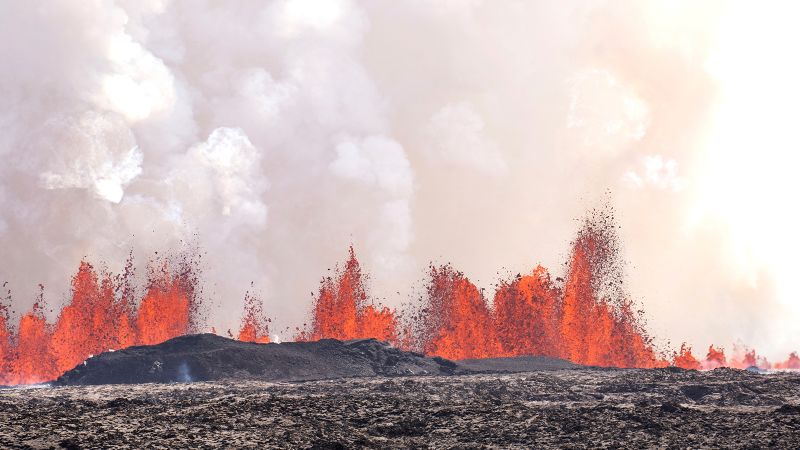
A volcano in southwestern Iceland, specifically the Sundhnukagigar volcano, erupted for the fifth time this year on May 30, 2024. This eruption is considered to be the most powerful one since it became active three years ago. The length of the fissure was about 3.4km (2.1 miles), and lava flows reached up to 50 meters (164 feet) high.
Grindavik, a coastal town of approximately 3,800 people located about 30 miles southwest of Reykjavik, was evacuated due to potential gas pollution and damage. The nearby Blue Lagoon geothermal spa was also shut down as a precaution.
The eruption began in the early afternoon north of Grindavik and sent massive plumes of hot volcanic ash and gas into the air. This is the eighth eruption on the Reykjanes peninsula since 2021, which is home to about 30,000 people.
The latest eruption led to significant damage in Grindavik, including disrupted district heating and closed key roads. Several homes were razed during previous eruptions in the town.
Volcanic activity isn't unusual in Iceland, but this eruption zone hasn't been active for 800 years. A series of earthquakes preceded the eruption in recent days.
Proper planning and respect are crucial for safe volcano tourism. Experts recommend educating oneself about restrictions and local authorities before visiting a volcano, going with a reputable guide when visiting an active volcano, and respecting cultural considerations at certain sites. Forecasting eruptions has improved significantly over the years, making volcano tourism safer. Automatic notifications are now used to alert visitors of potential danger in some areas with active volcanoes.








